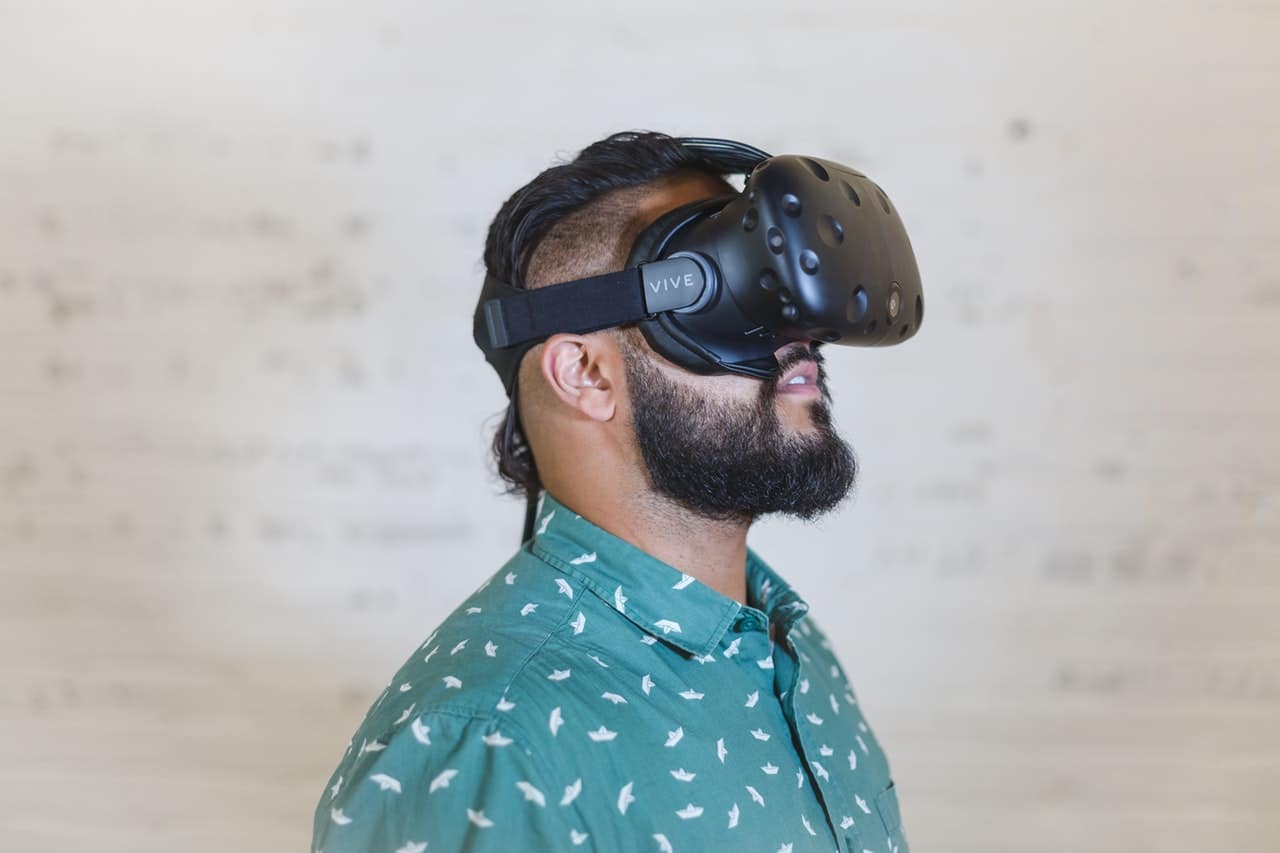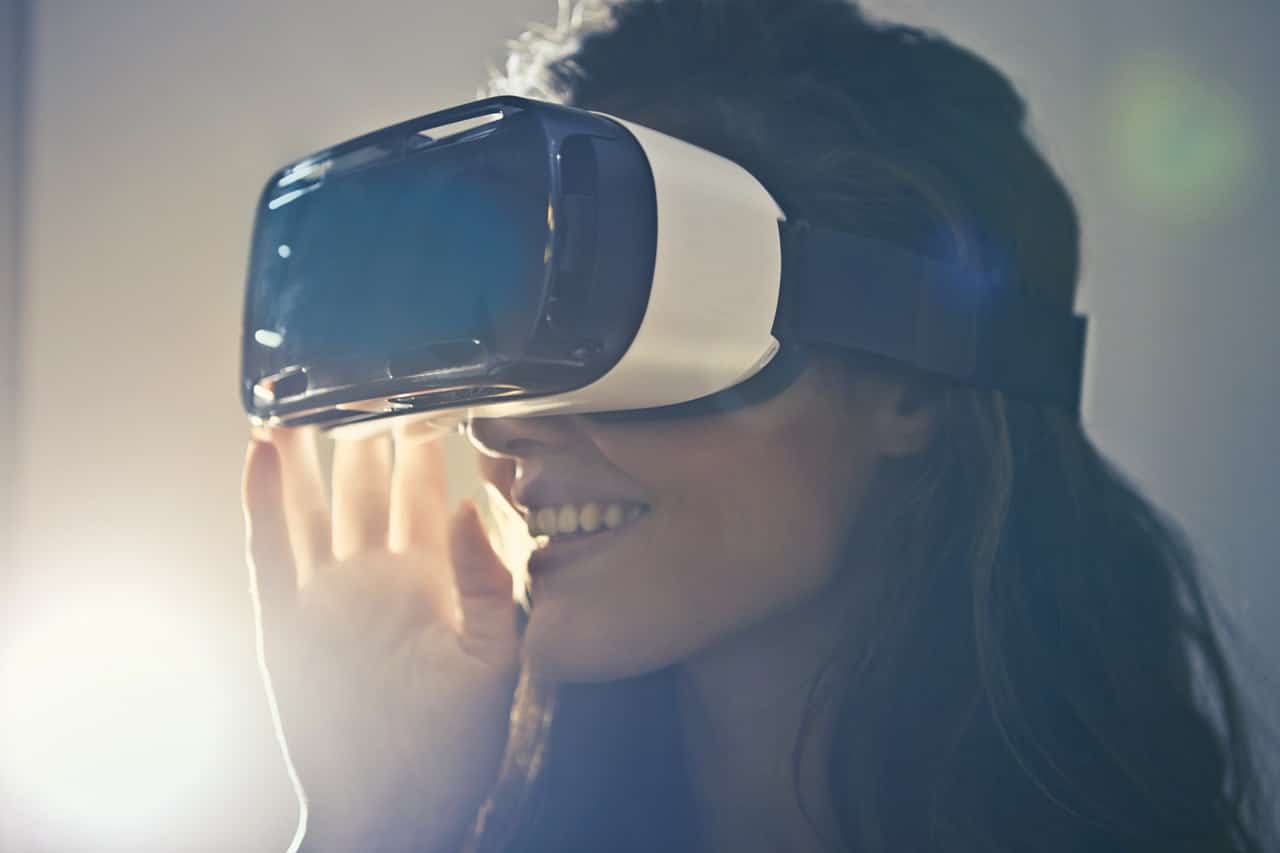Virtual reality (VR) is a remarkable technology that has come a long way in recent years. Though most of us might think of gaming when we first hear the term, there are a number of industries that have taken the idea of virtual reality and run with it, using it to solve problems, improve customer experiences, and enhance training.
Having made a real difference to our lives and to our futures, the inexorable progress of this technology isn’t likely to relent anytime soon. When you consider the nature of virtual reality, it makes sense that this interactive and immersive technology would be widely embraced — after all, it allows you to digitally experience another world, making use of auditory and visual feedback to engage and engross the user. Below, we’ll explore ten industries that, with the use of virtual reality, have progressed far beyond what we would have thought possible a decade ago.
IMAGE: PEXELS
1. Scientific Storytelling, Drug Visualization, And Medical Training
Virtual reality is being used in medicine in a number of valuable ways. For example, medical animation company Random42 has recently launched Intercellular, an interbody and solely educational virtual reality experience that takes users on an immersive journey inside the human body. By intertwining the worlds of art, technology, and science, medical animation makes use of stunning imagery to take the study of human anatomy to the next level.
It’s easy to understand why virtual reality is so valuable to medical training — after all, it’s simpler and safer for surgeons to train and perfect their existing techniques in virtual reality than on humans. With the use of virtual reality, surgeons can get a true understanding of the gravity and pressure of an operation without anyone truly being at risk.
The field of drug visualization also benefits from virtual reality — medical animation companies can make use of VR and scientific storytelling to demonstrate what a given drug does and how it benefits a patient. Descriptive and emotive language is certainly helpful when it comes to drug development and pharmaceutical sales, but virtual reality gives pharmaceutical sales representatives a real edge.
2. Recruitment
Companies are constantly looking for ways to improve and streamline their recruitment processes. Hiring the wrong candidate can be a costly decision, and so investing in technology that can improve the likelihood of employing a candidate who more closely adheres to a company’s values and culture is a no-brainer for many organizations. Virtual reality is now being used to assess potential clients and test their skills in an immersive environment.
One example is that of Lloyds Banking Group, which has used virtual reality to assess candidates for its Graduate Leadership Programs. The bank put recruits in a virtual reality environment and asked them to solve puzzles — observing candidates allowed hiring managers to determine whether they showed the capabilities and strengths they were looking for in a future leader.
3. Sales Enablement
Sales enablement is the process of providing a business with the content, information, and tools required to help its sales team sell more efficiently. Core to sales enablement is the ability to successfully engage with the client or buyer throughout the sales process, typically with a virtual sales platform. Virtual reality has become another sales enablement technology to interact with customers — in fact, immersion has been said to be the secret to sales enablement. Show and tell has always been the best way for a salesperson to showcase their products, but virtual reality takes this to the next level. With the use of virtual reality, companies can help customers experience the products and view the designs in 3D prior to purchase, which gives them a tangible idea of what they are investing in.
4. Travel
The travel industry has been quick to adopt virtual reality technology. Customers are willing to drop large sums of money on life-changing trips, but before they do so, they want to get a good idea of what to expect. This is where virtual reality comes in. VR can give individuals a digital taste of a hotel room, a scenic view or a local museum. Although it isn’t quite the same as being there and feeling the sun on your skin, virtual reality can certainly be used to give a promise of good things to come, and help put on-the-fence customers in that core frame of mind to buy.
5. Space Exploration
Anyone excited by the world of space exploration is aware that astronauts on the International Space Station are using Microsoft’s HoloLens and the Onsight video platform to conduct research into space exploration. Excitingly, through virtual reality headsets, the NASA team is collaborating in a virtual reconstruction of the surface of Mars. This has served to increase the effectiveness of space exploration — according to one source, when compared to the traditional plotting method, researchers were “two times more accurate at determining distances and three times more accurate at determining angles between specific Martian locations”.
6. Flight Simulation
One of the oldest and most well-known applications of virtual reality is pilot training and flight simulation. Before any pilot is permitted to fly a real plane, he or she must be tested in a simulation. This virtual reality flight simulation is designed to look and feel so real that the student will feel as if they’re flying a real plane, meaning they can immerse themselves and hone their skills in a testing but safe environment.
7. Military And Defence
Virtual reality simulations are being used to test soldiers in a variety of stressful situations to determine whether their reaction and performance times are to standard, without having to risk injury. This form of training is actually far cheaper than field training and can be used for flight, vehicle, and battlefield simulation.
8. Real Estate
Virtual reality is increasingly being utilized in real estate, allowing potential purchasers to look around a home (even one that hasn’t yet been built) to give them a true appreciation of the size and feel of a house. With virtual reality, individuals can explore every inch of a house of an apartment while interacting with objects. As visiting a home is often what seals the deal, this use of VR can prove significant to realtors.
9. Retail
It’s no surprise that online shopping is increasingly popular. There’s so much to dislike about traditional shopping — including pushy salespeople, ill-lit dressing rooms and items that are either impossible to find or constantly out of stock. Virtual reality is now being used to improve the shopping experience, allowing customers to try on or test merchandise or even design custom goods from the comfort of their own home.
10. Events
Virtual reality is affecting the events industry in a number of exciting ways, and one that is grabbing a lot of attention is virtual events, which don’t require people to physically attend. Virtual reality enables remote spectators to experience an event — they feel they are there in the flesh and are close to the action, all without having to leave their home or office. Virtual events provide a deep level of engagement and allow brands to reach a broader audience in real-time.
If you are interested in even more technology-related articles and information from us here at Bit Rebels then we have a lot to choose from.


COMMENTS